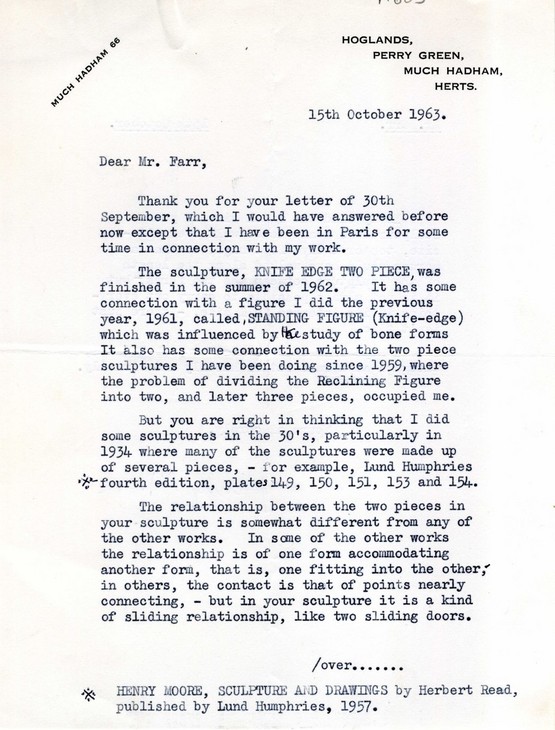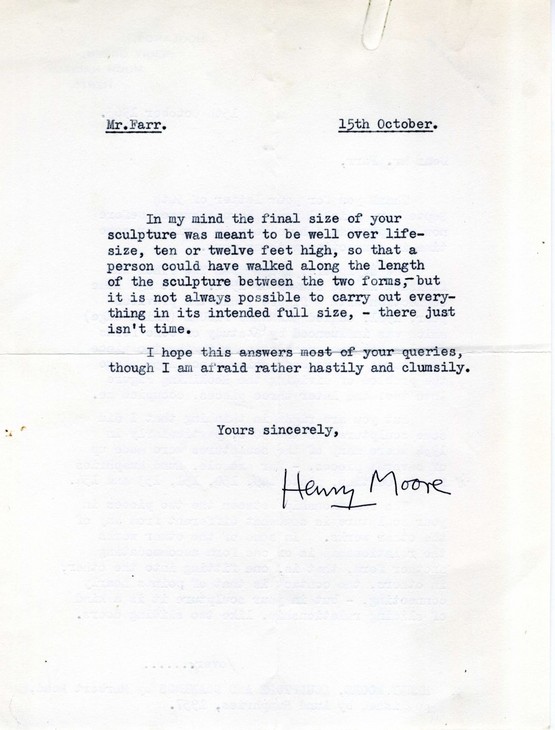Henry Moore Letter to Denis Farr 15 October 1963
In this letter to Denis Farr, Assistant Keeper, at the Tate Gallery from 1954 to 1964, Henry Moore discusses how in the sculptures he had been doing since 1959 he had been occupied with the problem of dividing the reclining figure into two or three pieces. The relationship of the elements of Working Model for Knife-Edge Two-Piece 1962 (Tate T00603) was not one of the forms fitting or accommodating each other but was ‘a kind of sliding relationship, like two sliding doors’.
Transcript
[Letterhead:]
Much Hadham 66 HOGLANDS,
PERRY GREEN,
MUCH HADHAM,
HERTS.
PERRY GREEN,
MUCH HADHAM,
HERTS.
[Typescript with handwritten signature:]
15th October 1963.
Dear Mr. Farr,
Thank you for your letter of 30th September, which I would have answered before now except that I have been in Paris for some time in connection with my work.
The sculpture, KNIFE EDGE TOW PIECE, was finished in the summer of 1962. It has some connection with a figure I did the previous year, 1961, called STANDING FIGURE (Knife-edge) which was influenced by the study of bone forms. It also has some connection with the two piece sculptures I have been doing since 1959, where the problem of dividing the Reclining Figure into two, and later three pieces, occupied me.
But you are right in thinking that I did some sculptures in the 30’s, particularly in 1934 where many of the sculptures were made up of several pieces, – for example, Lund Humphries fourth edition*, plates 149, 150, 151, 153 and 154.
*HENRY MOORE, SCULPTURE AND DRAWINGS by Herbert Read, published by Lund Humphries, 1957.
The relationship between the two pieces in your sculpture is somewhat different from any other works. In some of the other works the relationship is of one form accommodating another form, that is, one fitting into the other, – in others, the contact is that of points nearly connecting, – but in your sculpture it is a kind of sliding relationship, like two sliding doors. [end of p.1]
In my mind the final size of your sculpture was meant to be well over life-size, ten or twelve feet high, so that a person could have walked along the length of the sculpture between the two forms, – but it is not always possible to carry out everything in its intended full size, – there just isn’t time.
I hope that this answers most of your queries, though I am afraid rather hastily and clumsily.
Yours sincerely,
Henry Moore
How to cite
Henry Moore, Letter to Denis Farr, 15 October 1963, in Henry Moore: Sculptural Process and Public Identity, Tate Research Publication, 2015, https://www


